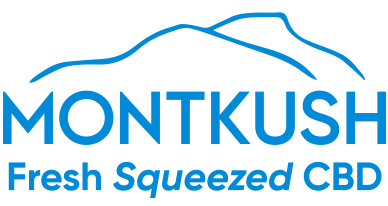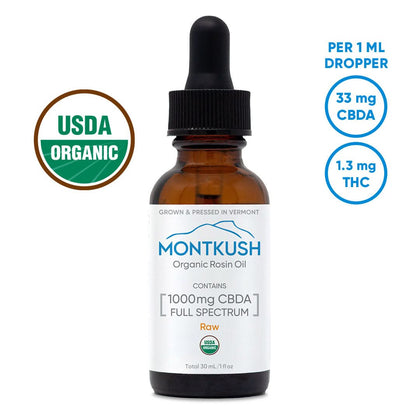

Table of Contents
Most people have heard of CBD. It’s practically a household name at this point, found in everything from tinctures to bath bombs. But fewer people know about CBDA—cannabidiolic acid—the raw, unheated form of CBD that’s gaining attention in the wellness world.
Both CBDA and CBD come from thecannabis plant and are non-psychoactive cannabinoids, meaning they won’t get you high. But while CBD has become a staple in natural health routines, CBD and CBDA each offer distinct properties. CBDA is stepping into the spotlight for its unique benefits and emerging therapeutic potential, with early research suggesting CBDA benefits may include relief from inflammation, stress, and nausea.
In this article, we’ll explain CBDA, how it compares to CBD, and why it might be worth exploring, especially if you’re looking for natural ways to support mood, inflammation, and more.
Key Takeaways
CBDA (cannabidiolic acid) is the raw, unheated precursor to CBD, found naturally in the hemp plant and converted into CBD through heat.
Unlike CBD, CBDA may offer higher bioavailability and interacts differently with the body, showing strong potential for targeting inflammation, anxiety, and nausea.
Early research reveals CBDA inhibits COX-2 enzymes like NSAIDs and is significantly more effective than CBD at activating serotonin receptors involved in mood and nausea regulation.
CBDA is non-psychoactive and available in raw forms like oils, capsules, and topicals.
As research continues to grow, CBDA is emerging as a powerful, natural alternative to conventional CBD products, especially for those seeking unprocessed, bioactive cannabinoids.
What is CBDA?
CBDA stands for cannabidiolic acid, one of the many cannabinoids found in raw, unprocessed hemp. It’s the precursor of CBD, meaning it comes first in the plant’s life cycle. When hemp is harvested in its natural form, raw CBDA is present in high amounts. But once that hemp is heated—whether through smoking, cooking, or specific extraction processes—CBDA goes through decarboxylation and converts to CBD. This process, often referred to as CBDA to CBD, changes the compound’s structure and how it interacts with the body. If you’ve ever juiced raw cannabis leaves or used raw CBD rosin, you’ve already consumed CBDA.
While CBD gets much attention for its calming and anti-inflammatory properties, CBDA is starting to carve out its reputation. People are drawn to it because it’s less processed, often better absorbed by the body, and might offer slightly different effects.
For those who are sensitive to highly refined products or want to keep their cannabinoids as close to the plant as possible, CBDA can be a compelling option.

CBD vs. CBDA: What's the Difference Between the Cannabinoids?
At a chemical level, the chemical structure of CBDA includes a carboxyl group—that extra acid molecule CBDA retains until it’s exposed to heat. That subtle structural difference plays a significant role in the difference between CBDA and CBD.
- CBDA is found in raw hemp.
- CBD is produced when CBDA is exposed to heat.
- CBDA may be more bioavailable—meaning your body might absorb it more efficiently.
- CBDA interacts with the endocannabinoid system differently, engaging with serotonin and COX-2 pathways, whereas CBD affects a broader range of receptors.
In short, CBDA is what the cannabis plant naturally produces. CBD, while beneficial, is a result of processing. Think of it as the difference between fresh-squeezed juice and pasteurized juice—same origin, different delivery.
CBDA is also considered a major cannabinoid precursor compound, meaning it leads to the formation of other cannabinoids like CBD, THCA, and CBGA during the plant’s maturation or extraction process.
Potential Health Benefits of CBDA
The wellness industry has spent years spotlighting CBD's benefits, but CBDA is still making waves of its own. Early studies suggest it could be just as promising, if not more effective, in some areas.
Let’s take a closer look at what the research says.
CBDA for Pain and Inflammation
In 2008, researchers found that CBDA shared similarities with non-steroidal anti-inflammatory drugs (NSAIDs), like ibuprofen. These drugs block the COX-2 enzyme , which is responsible for pain and inflammation. CBDA has been shown to do the same, naturally.
This means CBDA may provide anti-inflammatory effects like NSAIDs, without the stomach irritation or long-term risks. For people dealing with chronic pain, workout recovery, or joint issues, CBDA could be a plant-based alternative that works on the same biological pathways.
Its efficacy in targeting inflammation continues to be explored, but the potential here is undeniable.
CBDA for Anxiety and Stress Relief
CBDA doesn't just stop at inflammation—it also appears to play a major role in emotional regulation.
How? It activates the 5-HT1A serotonin receptor, a key player in managing anxiety and stress. This interaction is similar to CBD’s, but CBDA has been shown to be more effective at binding to this receptor in early lab models.
That makes it especially promising for people looking for non-intoxicating alternatives to THC or conventional anxiety medications. You get a clearer head, without the fog.
CBDA for Nausea and Vomiting
CBDA is gaining attention for its anti-nausea potential, not just as a mild digestive aid.
In studies involving animal models, CBDA has shown itself to be more than 1,000 times more effective than CBD in activating a specific serotonin receptor, 5-HT1A . This receptor plays a major role in regulating nausea and vomiting , especially in chemotherapy patients.
Even more interesting? CBDA’s effects appear to be e specially strong when combined with ondansetron (OND) —a commonly prescribed anti-nausea drug used during chemotherapy. This suggests CBDA could potentially enhance the effectiveness of existing anti-nausea treatments or even serve as a natural alternative in the future.
CBDA and Broader Therapeutic Use
These early findings have one crucial thing in common: they position CBDA as a non-psychoactive cannabinoid with a wide range of potential benefits. From inflammation and pain to nausea and mood, CBDA appears to act on key pathways in the body that influence how we feel daily.
The fact that it works without the high, and often with higher potency than CBD, makes it appealing to people looking for targeted relief without impairment. It’s a fascinating option for those navigating medical treatments, chronic conditions, or everyday wellness routines who want something natural, but still effective.
As always, more research is needed to fully understand how CBDA works in the human body. But the existing data gives us plenty of reasons to take this cannabinoid seriously and to keep a close eye on where the science leads next.
CBDA for Immune Support
CBDA’s anti-inflammatory action could help support a healthy immune response. Since inflammation is closely linked with immune function, keeping it in check is essential to your body’s ability to fight off threats.
Early evidence shows that CBDA and other cannabinoids may help regulate immune responses in a way that’s gentler than synthetic medications, but just as effective.
How to Take CBDA: Product Types & Tips
If you’re curious about CBDA, the good news is that it’s becoming easier to find. However, not all CBDA products are created equal. Look for options that are clearly labeled as raw or CBDA-rich, since heating or over-processing can convert CBDA into CBD.
Common CBDA Product Options
CBDA Oils and Tinctures: Easy to dose, quick to absorb, and typically made with hemp extract.
CBDA Capsules: A no-flavor, no-fuss method for those who prefer simple supplements.
CBDA Topicals: Target local pain or inflammation without affecting your whole system.
Raw CBDA Oil: MONTKUSH's signature product. Pressed without solvents or heat, it’s pure, unlike CBD that’s been chemically extracted.
How to Maximize the Effects of CBDA
To get the most out of CBDA, a few things matter:
KEEP IT RAW. Avoid heating it in food or drinks if you want to preserve the CBDA content.
BE CONSISTENT. Like most supplements, CBDA tends to work best when taken regularly.
START LOW AND BUILD. Everyone responds differently, so find the dose that works for your body.

Is CBDA Worth Exploring?
Absolutely. If you’ve had mixed results with CBD or are looking to expand your wellness toolkit, CBDA offers a different approach—one that may be more bioavailable and targeted.
It’s also an excellent option for anyone looking to minimize their exposure to heavily processed products. With brands like MONTKUSH leading the way in solventless CBDA extraction, the quality and purity of available products are better than ever.
So, whether you’re managing chronic pain, looking for a mood lift, or simply curious about the major cannabinoids found in the hemp plant, CBDA is worth exploring.
FAQs
Does CBDA make you high?
No. CBDA is non-psychoactive, just like CBD. You’ll feel balanced, not buzzed.
What is the difference between CBD and CBDA?
The crucial differences between CBD and CBDA lie in their chemical structures and their interaction with the body. CBD is the non-acidic form of the cannabis compound, whereas CBDA is the acidic precursor to CBD. This means that CBDA does not directly interact with the body’s endocannabinoid system like CBD does. Instead, CBDA converts into CBD when heated or decarboxylated, which is a process often seen in the production of CBD oil and other cannabis compounds.
What are the health benefits of CBDA?
CBDA is considered to have unique properties that may contribute to its potential therapeutic benefits. Some of the research on CBDA suggests it may effectively reduce inflammation, nausea, and possibly even seizures. Studies have indicated that CBDA has anti-inflammatory effects that may help with arthritis or chronic pain. However, further research is needed to fully understand the health benefits and efficacy of CBDA in comparison to CBD.
How does CBDA convert into CBD?
CBDA converts into CBD through a process called decarboxylation, which typically occurs when the compound is exposed to heat. This transformation is crucial for making CBD more bioavailable, as CBDA is less effective in its acidic form. When manufacturers create CBD oil, they often subject the plant material to heat, thus converting CBDA into CBD and enhancing its overall potency and effectiveness.
Are there any side effects of using CBDA?
CBDA is believed to be generally well-tolerated, much like its counterpart, CBD. Most users of CBDA and CBD products report minimal side effects, such as fatigue or digestive issues.




